The Casa Grande Ruins National Monument is a historical and cultural gem near current-day Coolidge, Arizona. The United States Government established this one-square-mile National Monument in 1892 to preserve what remained of the ancestral Sonoran civilization, their community, and their irrigation systems.
The Sonoran Desert people thrived as a farming community. Their still partially-standing great house is a testament to their architectural and construction skills. With a rich history spanning over 700 years, Casa Grande National Monument offers visitors a fascinating glimpse into the past.
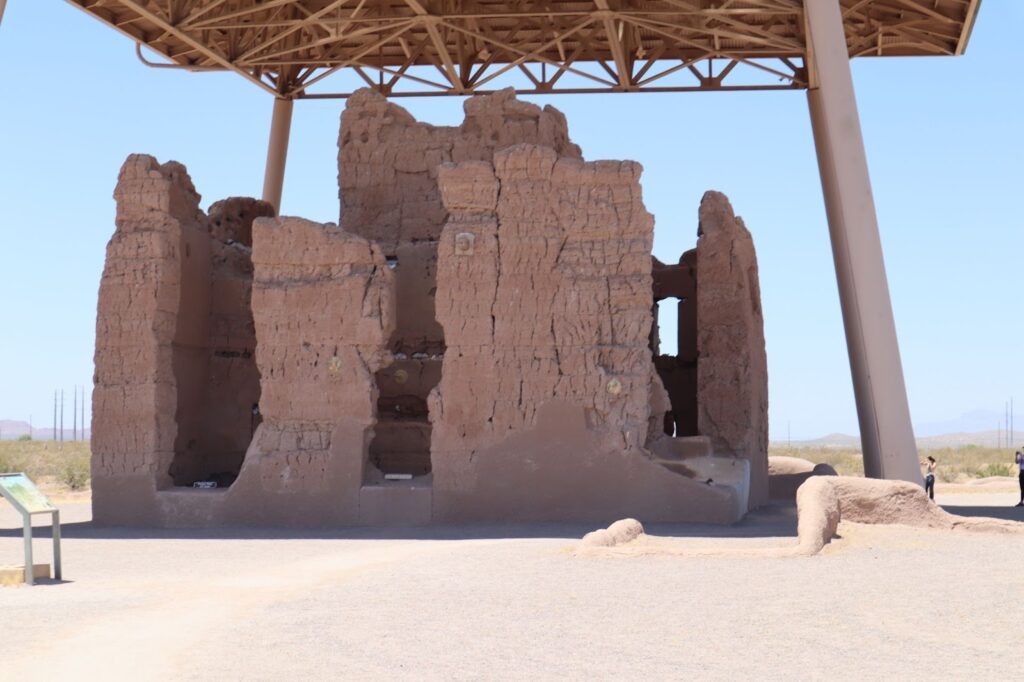
Let’s explore the self-guided tour of the Casa Grande ruins and why it should be on your Arizona travel list.
What are the Casa Grande Ruins?
Archaeological evidence suggests the Hohokam people descended from an earlier hunting and gathering culture around the time of 5,500 BC. Over time, as the air grew hotter and drier, wild plants and animals became less abundant. So they started a gradual transition from a hunter and gathering to a more settled farming existence.
The Hohokam people built the Casa Grande to support this more wide-scale irrigation farming practice.
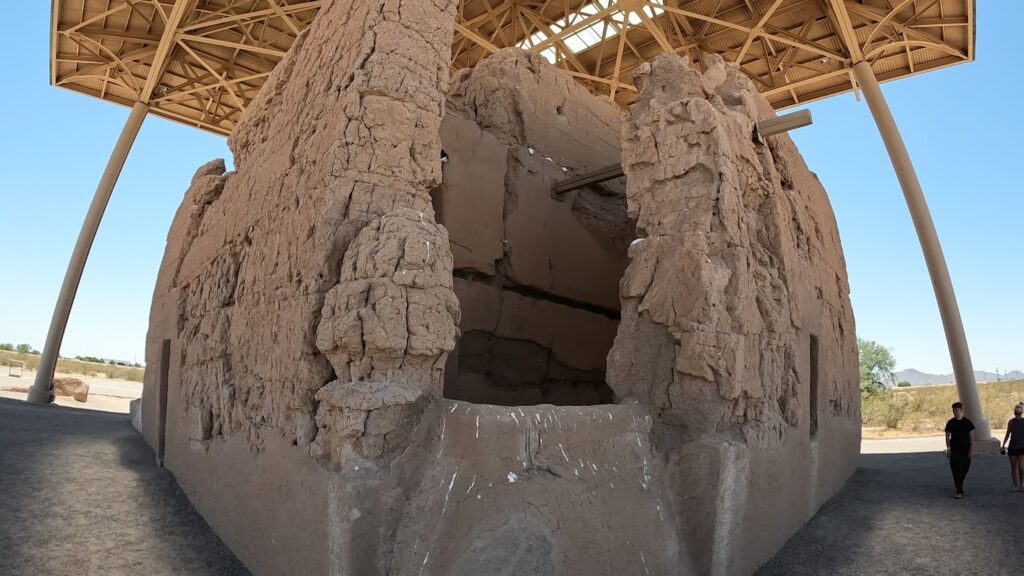
Irrigation Canals
Now the ancient Sonoran desert people discovered that as their villages grew, farmland adjacent to the rivers became more scarce. To bring water to land further away from the rivers, they began to dig canals around 1500 BC. They used this technique for generations to support their ancient culture.
Archaeologists have discovered hundreds of miles of prehistoric irrigation canals in the Gila River Valley, as well as the Salt River Valley of Phoenix, and the Santa Cruz River Valley near Tucson. This extensive system of canals allowed irrigation supporting farming in dry areas throughout the region.
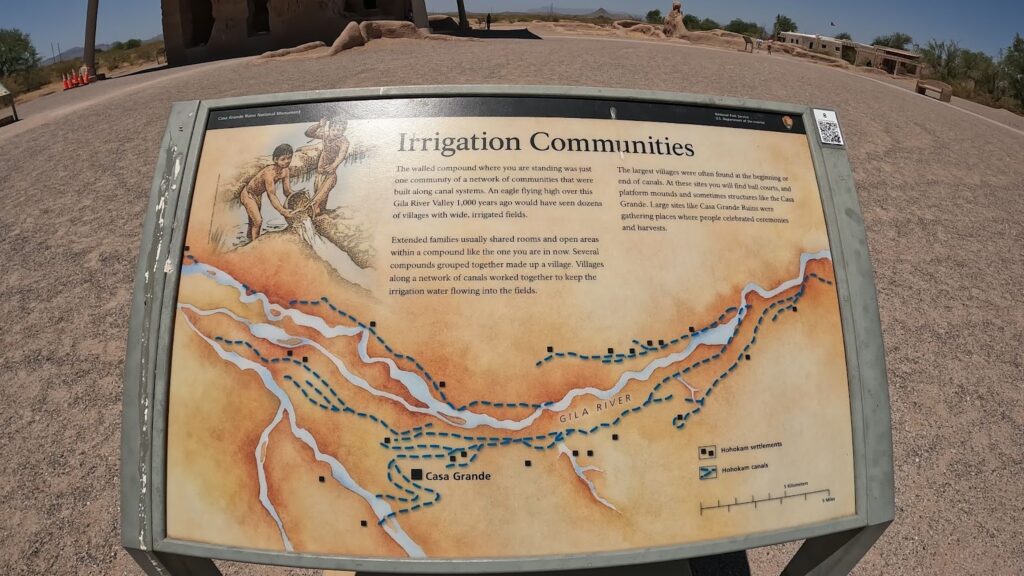
Crops
The crops grown by the ancestral Sonoran desert people eventually grew to include corn. In addition, these ancient people grew several varieties of beans and squash, as well as cotton and tobacco. In addition to cultivated crops, the Hohokam culture continued to make use of the many native plants and animals of the desert.
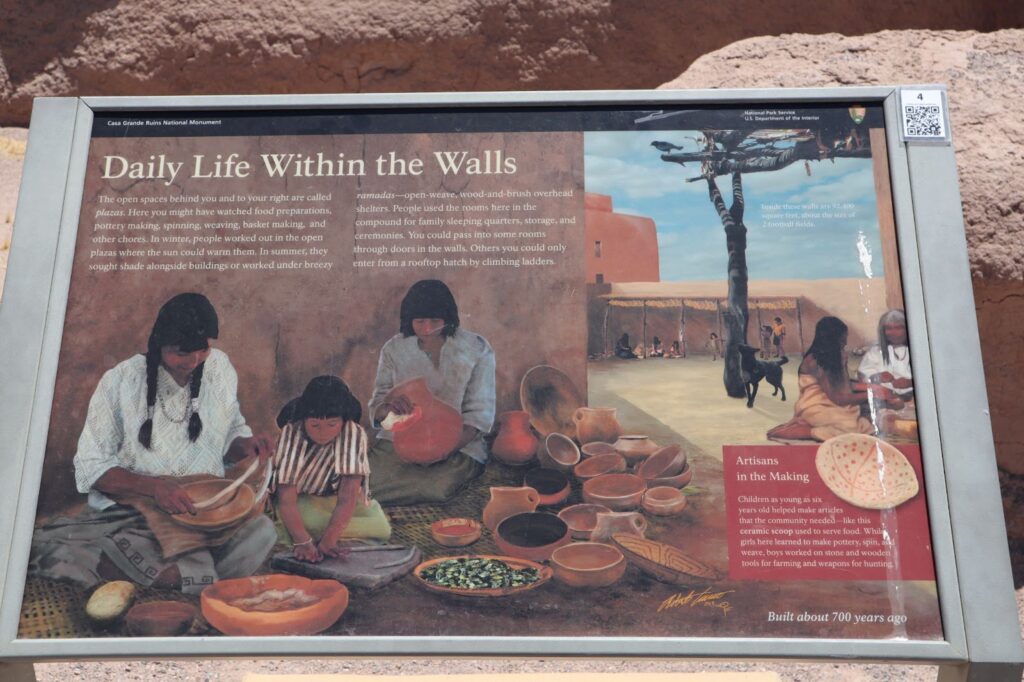
Construction
Desert dwellings changed over time. The earliest types were called pit houses, and it consisted of large oval pits dug several feet into the ground. They built a brush and pole framework over the pit. Then they applied a layer of mud to the outside. By the 1100s, these earthen buildings gave way to more permanent and above-ground structures.
They used caliche, a natural concrete-like material found under the topsoil throughout the region.
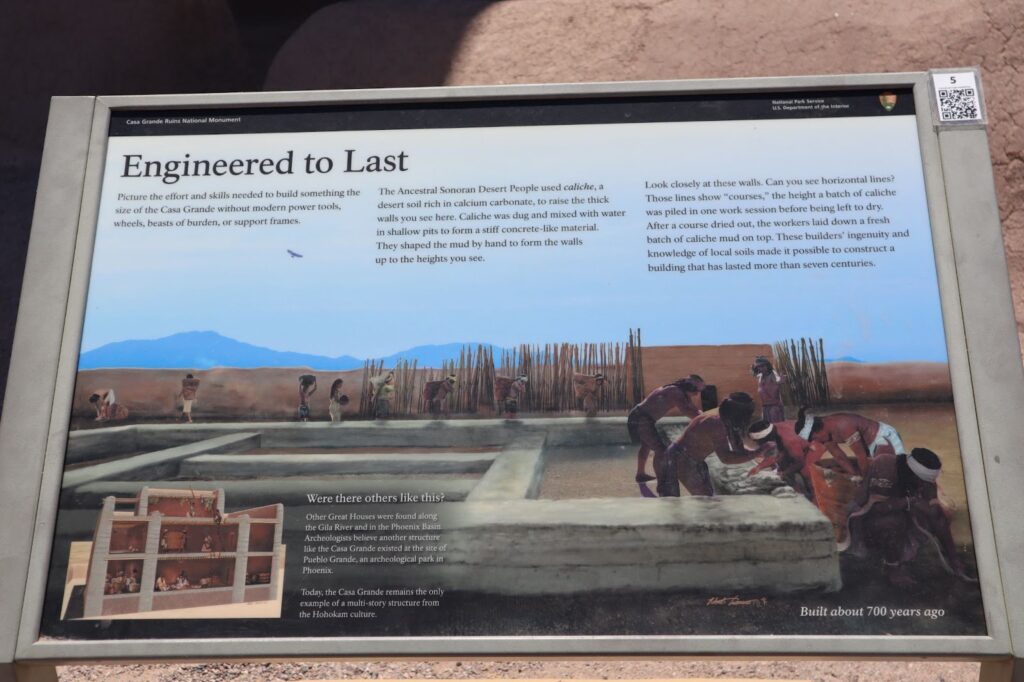
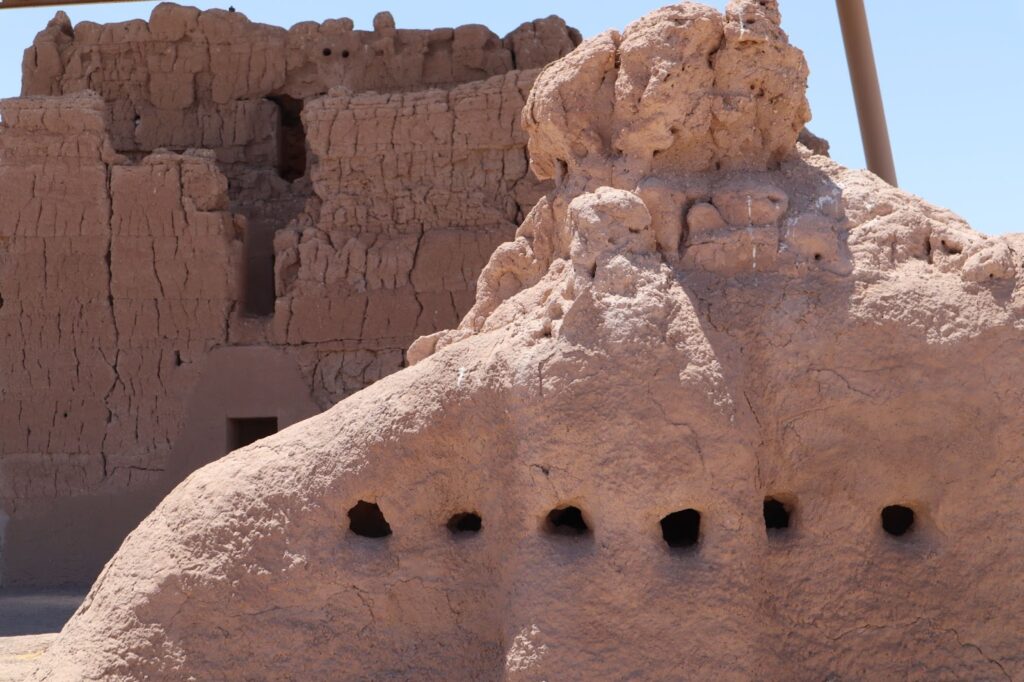
The Hohokam people built houses with solid walls and flat, caliche-covered roofs. Caliche homes were grouped in the Caliche compound wall, and these compounds were arranged around public plazas and public structures. They built the Great House as a gathering place for the community and their trading partners. There were many stores in an extended network of communities in the Gila Valley.
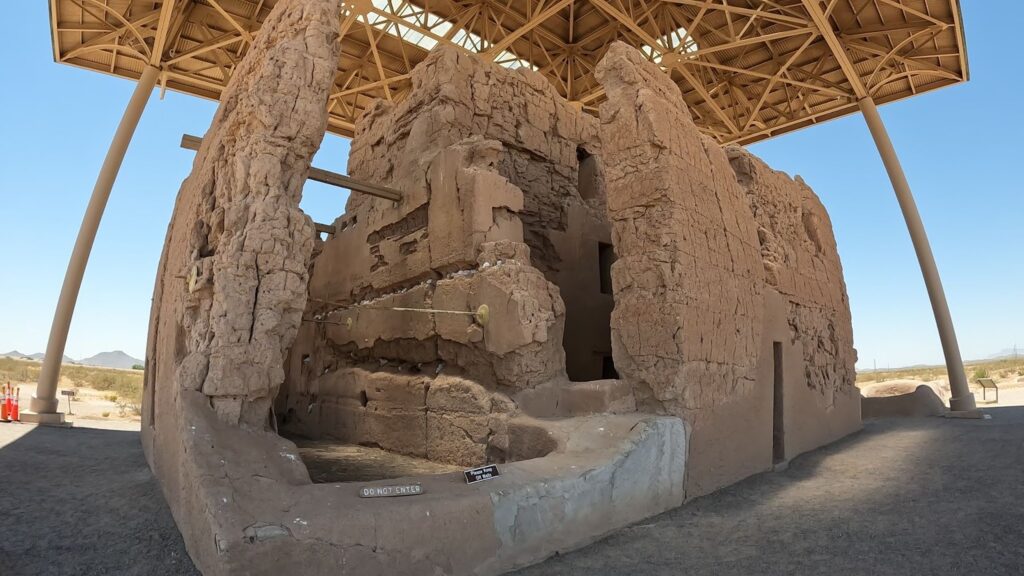
The Casa Grande big house was built within one of these compounds. Today, it serves as the main visitation area for the public at Casa Grande Ruins National Monument.
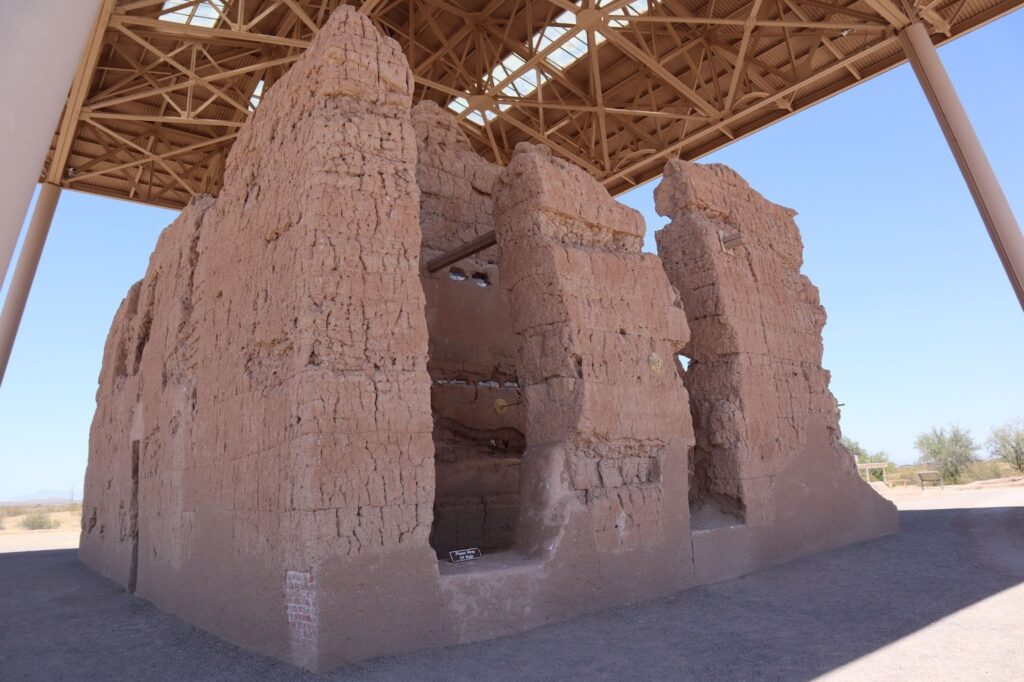
The building of the Casa Grande was a major event of the classic period. The ancient peoples built the large Caliche structure and compound during the 1300s.
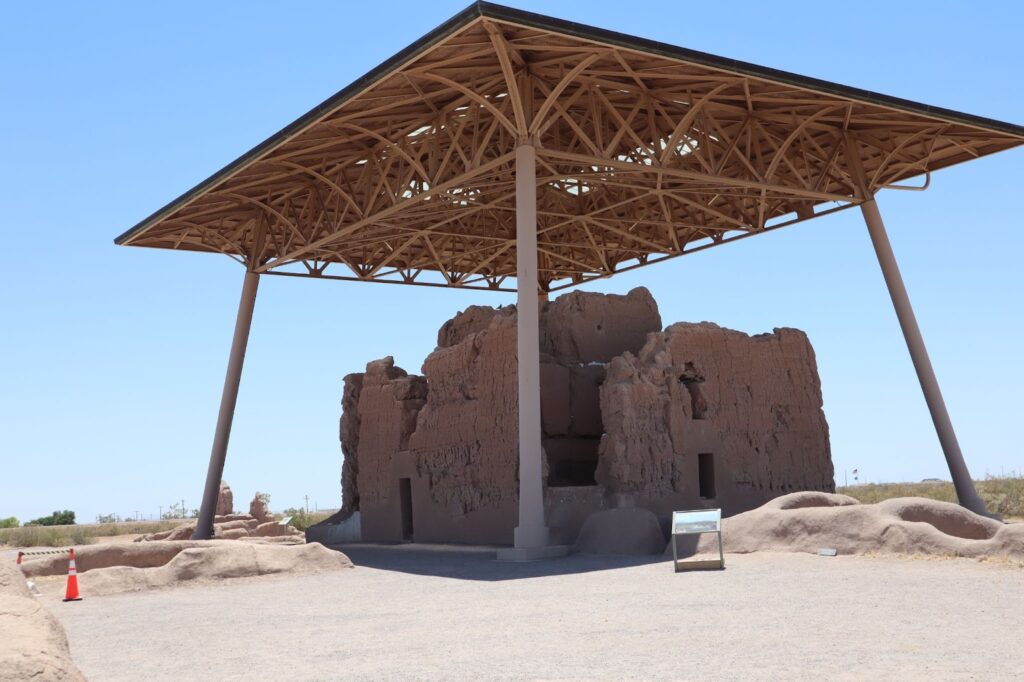
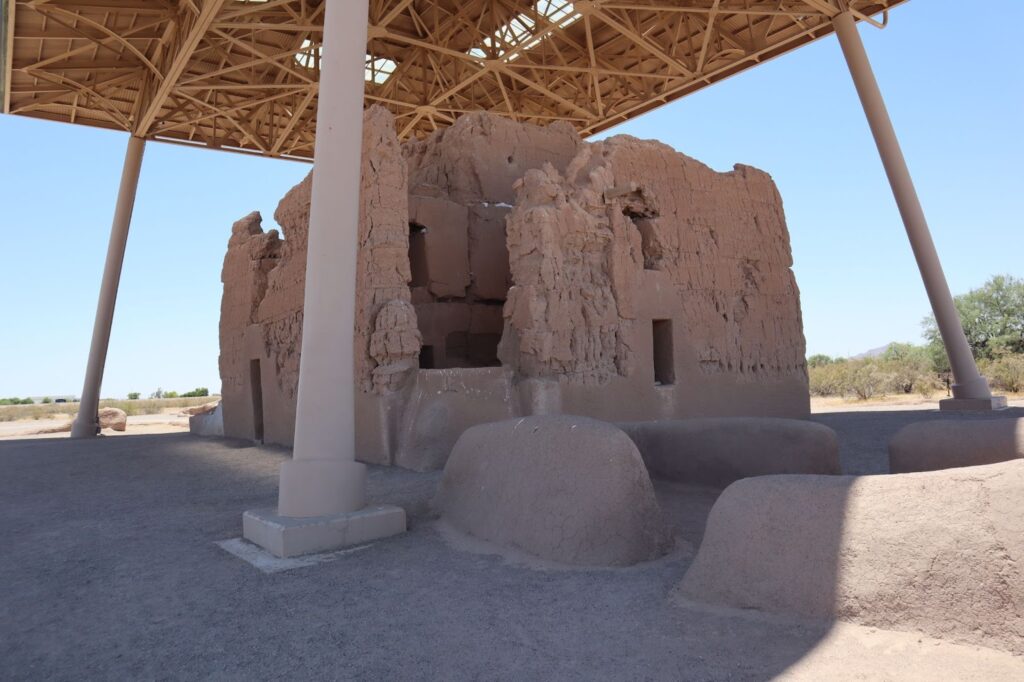
The Name: “Casa Grande”
Spanish Missionaries, especially the Jesuit Priest, Padre Eusebio Francisco Kino, spent most of their adult lives spreading Christianity to the people in Northern Mexico and southern Arizona. Padre Kino began a long-term journey, founding many missions, including the San Xavier del Bac Mission Church near Tucson. Kino was the first European to visit the large Hohokam ruins which he named “Casa Grande” in 1694.
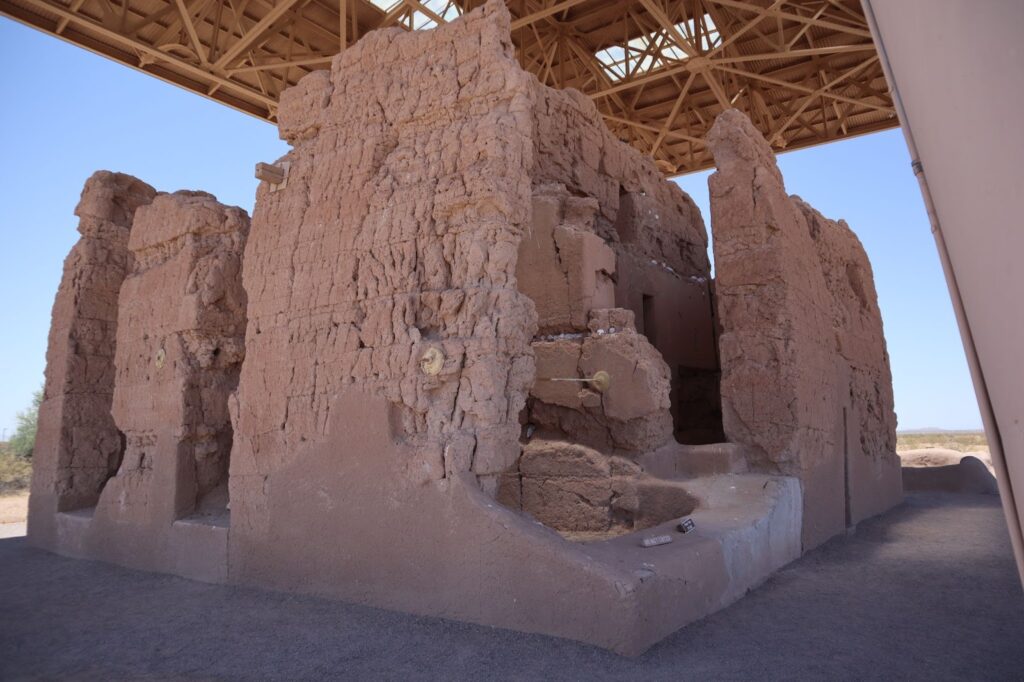
Preservation of the Site
More and more people came to visit the old ruins with the introduction of a train depot nearby. A stagecoach also routinely ran right by the ruins. These early visitors caused extensive damage by souvenir hunting and vandalism. Preserving the site became a more pressing concern as visitors continued to damage the ruins.
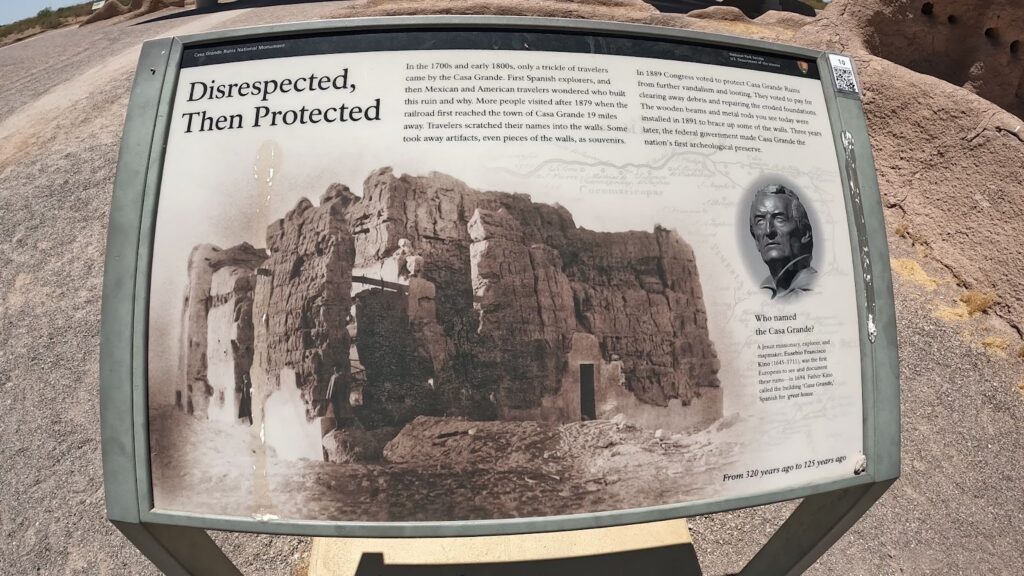
A roof of corrugated iron supported by redwood timbers was built to provide shelter for the great house. In 1906, major excavations and repair work were completed over the next few years.
The Civilian Conservation Corps was brought in during the late 1930s to build several adobe buildings supporting park operations. These structures remain intact and are been listed on the National Register of Historic Places.
Historical Recognition
President Benjamin Harrison proclaimed the one square mile site to be the Casa Grande reservation on June 22nd, 1892, becoming the nation’s first archeological preserve. President Woodrow Wilson then designated it a United States National Monument on August 3rd, 1918.
The National Park Service administers this cultural reserve and national monument. These buildings are on the National Register of Historic Places listing. It is one of the largest prehistoric structures in Arizona still standing.
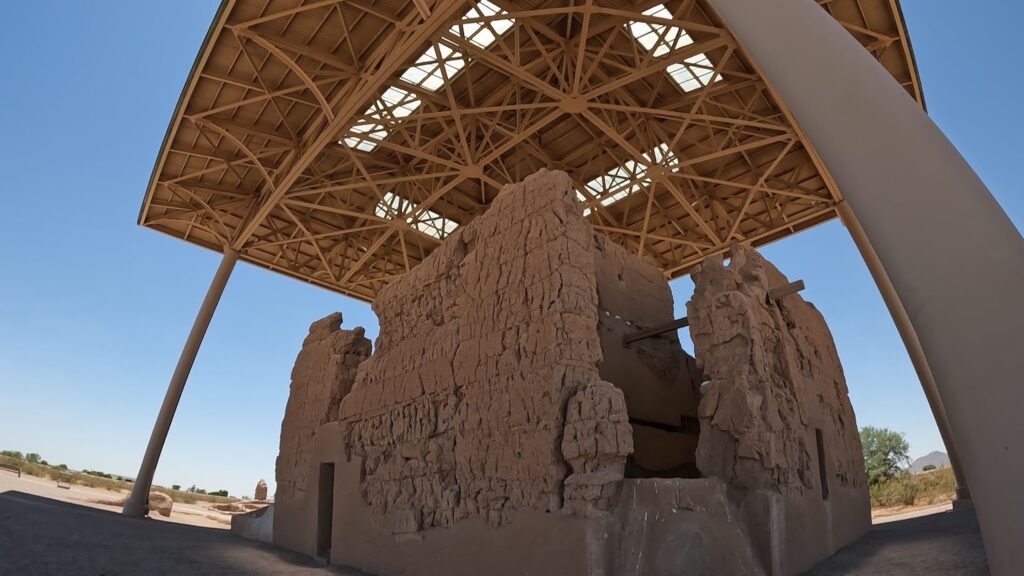
This is just one of the many archeological sites built by the Hohokam peoples in the Southern Arizona region. This includes the Montezuma Castle and Montezuma Well National Monuments, the Tuzigoot National Monument, and the pueblos at the Wupatki National Monument.
Visitor Center
The Visitor Center has several exhibits and interpretive programs to learn more about the ancient Sonoran desert people, along with various artifacts on display. The park ranger staff are also great resources for questions on the Casa Grand Ruins and its prehistoric inhabitants. The site is an easy walk and you have nothing to climb other than a few steps at the Casa Grande structure. So, it’s a really simple national monument to go check out. The Casa Grande Ruins National Monument is located almost centrally between Phoenix and Tucson.
There are no entrance fees to the Casa Grande Ruins National Park as it is free to the public.
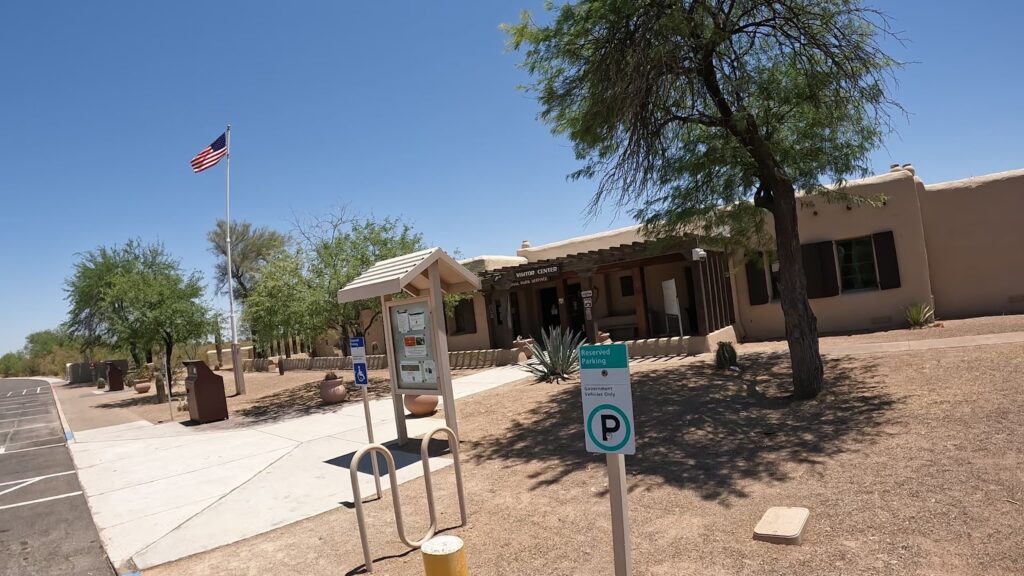
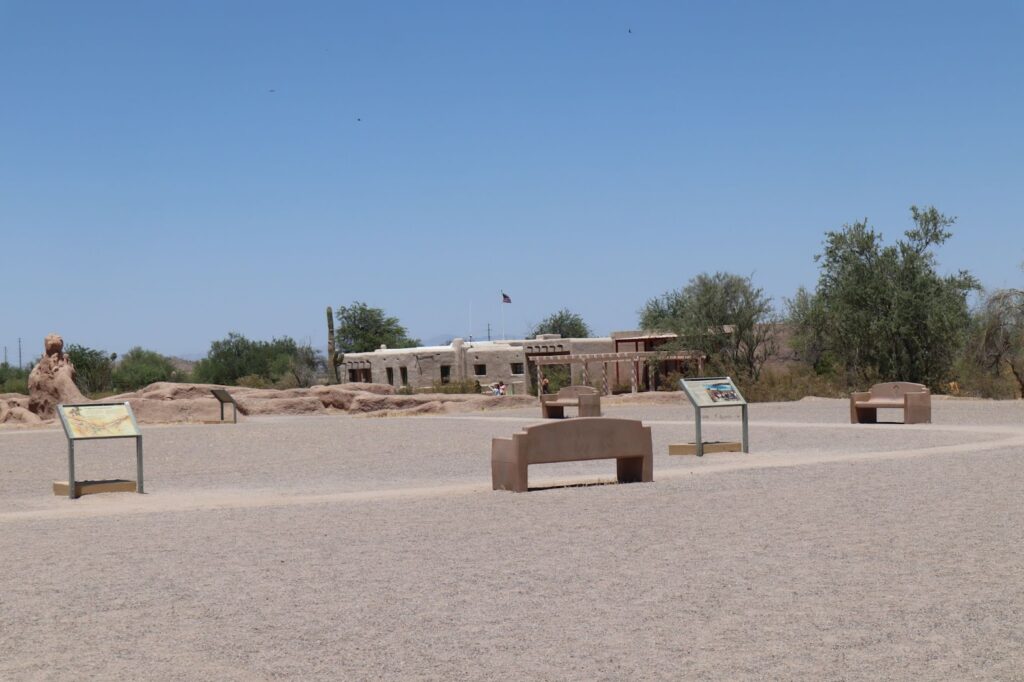
Where are the Casa Grande Ruins Located?
From Phoenix, you head down I 10 East about 37 miles and get off at one of the Coolidge exits such as the Highway 387 exit.
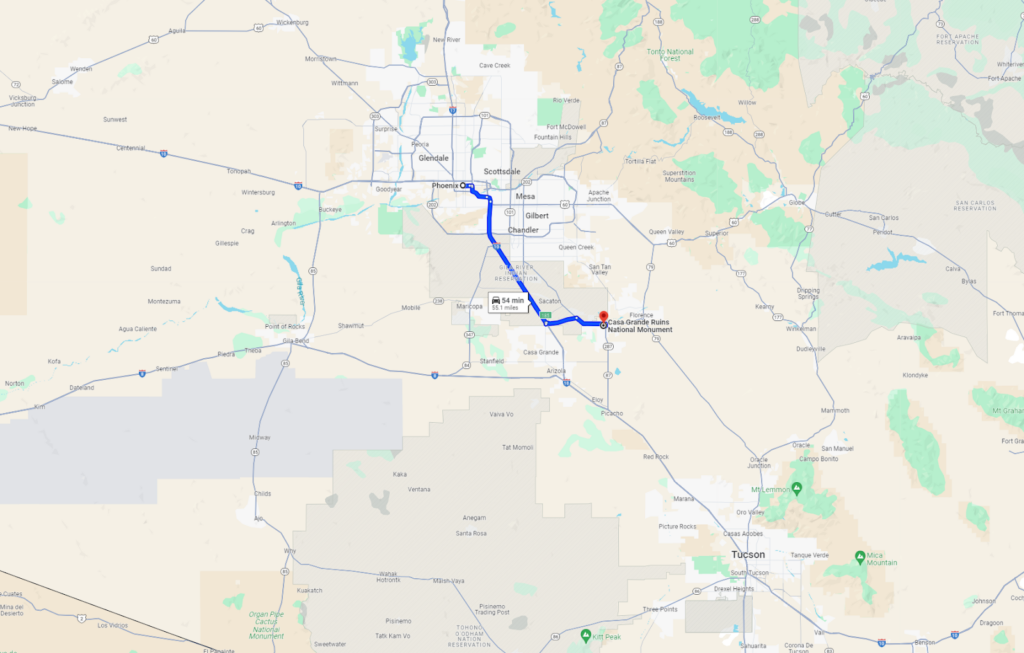
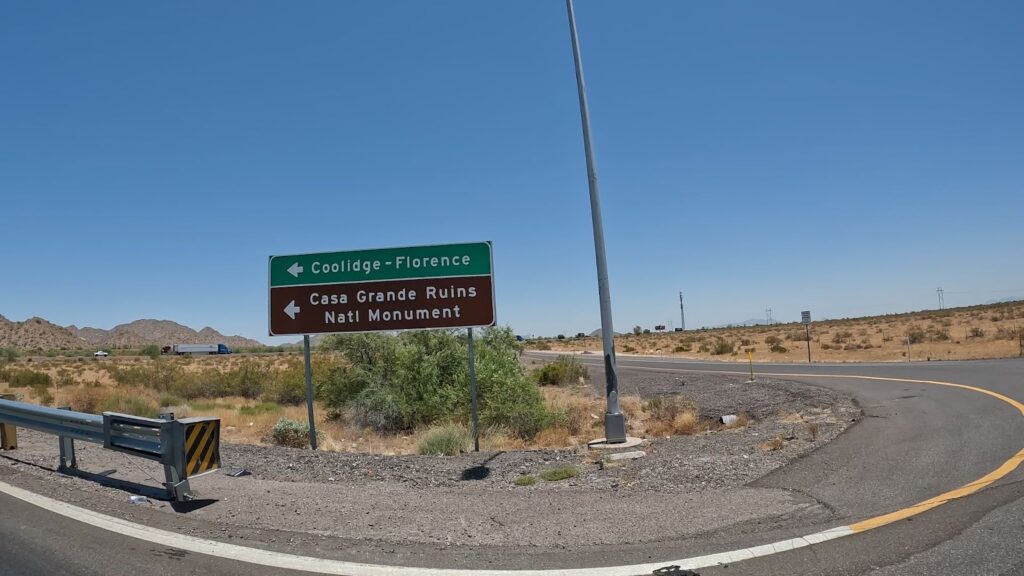
Turn left under the overpass and drive about 15 miles on Highway 387. Turns into Highway 87 to the right of the park entrance road of the Casa Grande National Monument, which is close to Coolidge. Arizona. The Casa Grande National Monument is a unique opportunity to immerse yourself in the rich history and natural beauty of the Sonoran Desert.
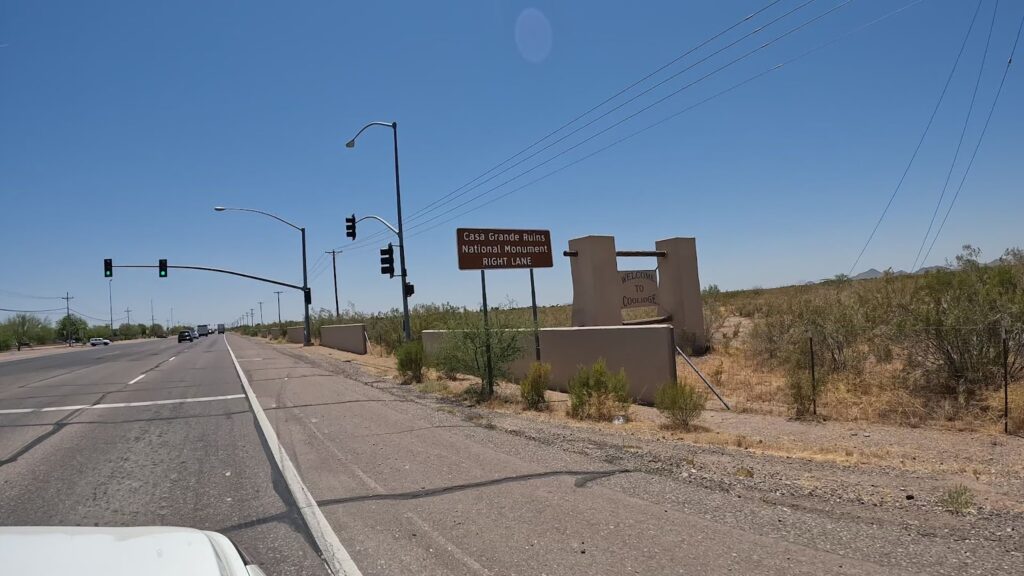
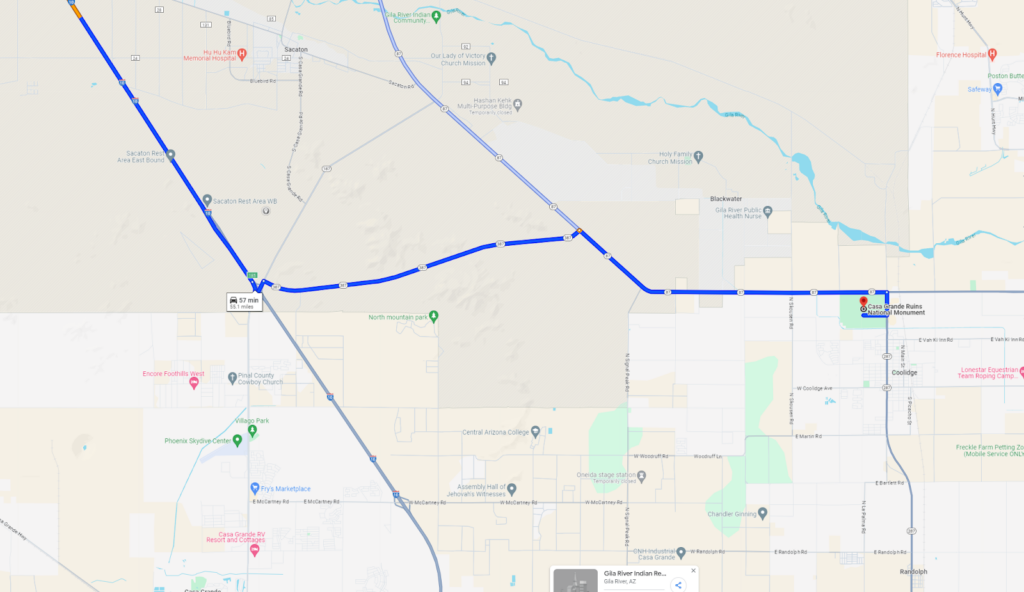
Park in the adjacent parking lot and enter the Visitor Center to start your exploration of the site.
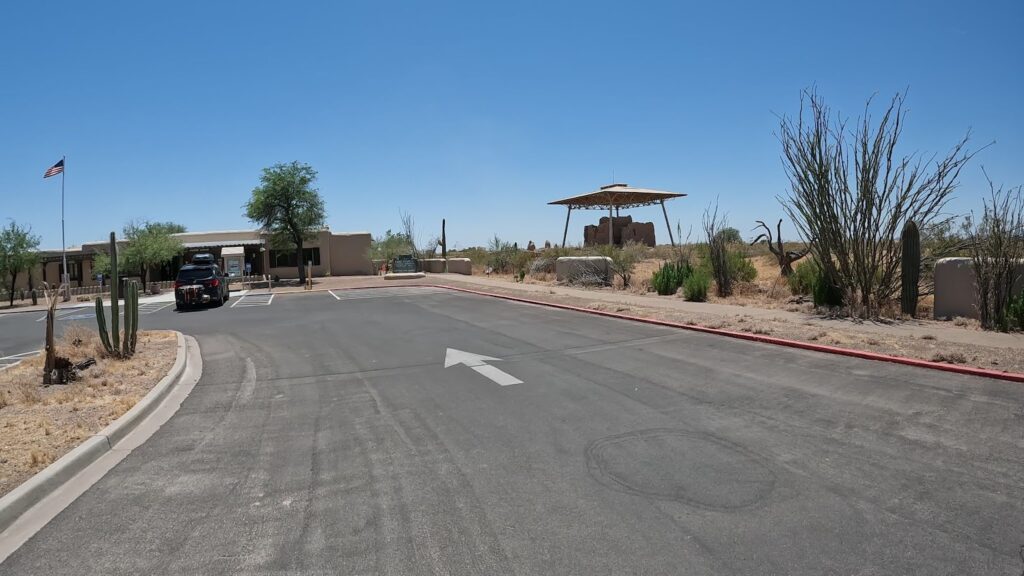
Closing
The great house and surrounding ruins remind us that ancient civilizations not only lived but thrived in this difficult terrain. The ancient Sonoran Desert people built canals and irrigation That rivaled what we have today, which is incredible to consider.
Again, if you are interested in the Hohokam people and their culture, you will want to check out the Montezuma Castle and Montezuma Well National Monuments, the Tuzigoot National Monument, and the pueblos at the Wupatki National Monument posts. Also, check out Walnut Canyon National Monument as these ancient people were cliff dwellers as well.
Look, if you like this content, you will want to check out all our other videos covering nearby Tucson and surrounding attractions, including the Saguaro National Park and trails, the Old Bisbee Mining Town and Queen Mine Tour, Tombstone with its cemetery and Old Town atmosphere, and our favorite Hacienda Linda B&B.
Also check out all our other videos covering the many fun and historical attractions that we have on our Travel with D and E channel or go to the Epic Arizona Trip playlist with 40 videos covering attractions throughout the State of Arizona. Do us a favor and subscribe, that way you get to know when we put a new video out, like the video, and share it with your family and friends.
Remember to put a comment below. If you’ve visited the Casa Grande Ruins National Monument.

Leave a Reply